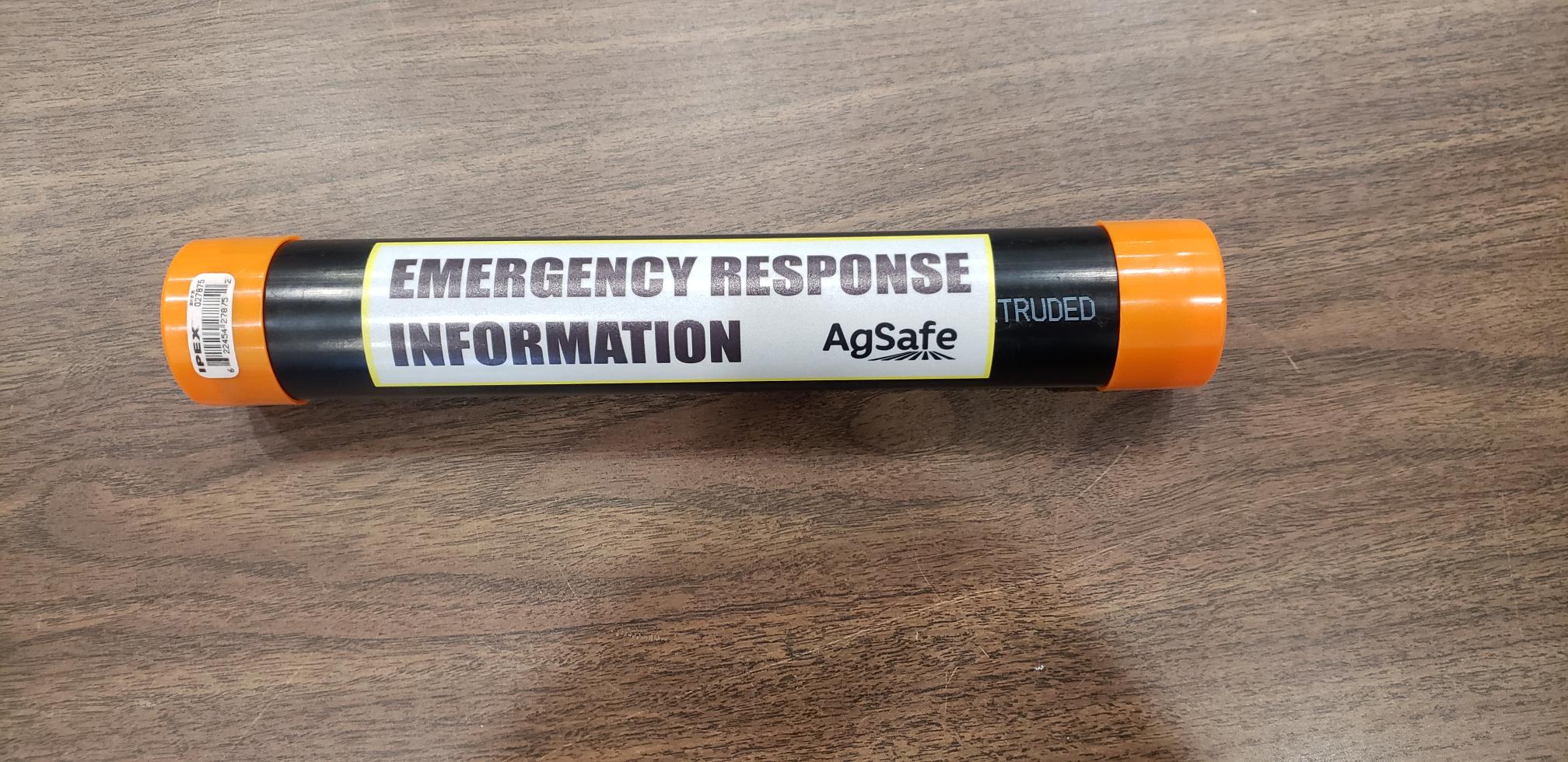Emergency information tubes include maps, information about power sources, and more that responders need to know about evacuated properties.

Photo credit: AgSafe, used with permission
It’s been a year since B.C.’s atmospheric river event caused catastrophic flooding and landslides. So many have been hit hard by its effects. Lives have been changed. Employers are still rebuilding and being prepared is on their radar.
See Is your workplace prepared for an emergency? (WorkSafeBC) to determine whether your business needs to revisit and improve its emergency response plan.
One tip I saw recently was to use an “Emergency Information Tube.”
AgSafeBC, B.C.’s health and safety association for agriculture, recently started providing them to agricultural employers across the province. Each tube is made with PVC pipe supplied by the B.C. Cattlemen’s Association and marked with reflective decals from AgSafe.
The tube should be mounted securely near a primary entry point to the property. They can be left out in any situation where responders may need to attend, or when you have to evacuate your property.
The information you provide in the tube helps emergency responders entering evacuated properties respond to a situation more effectively. It can also save lives.
To find out more, I contacted Reg Steward, a provincial ranching safety consultant and superintendent of field operations for AgSafe. In the summer of 2017, during B.C.’s historic wildfires, Reg was the agricultural liaison in the Cariboo Regional District Emergency Operations Centre.
“It was very difficult for emergency responders to garner information about sites that they were working on,” Reg says. “And it was very difficult to contact people who had left their properties.”
For their own safety, emergency responders need to know the risks they face on an evacuated property. Says Reg: “They need to know where to find electrical shutoffs and water faucets and pump lines, gate locations, water locations, and the location of fuel and other materials that risk their personal safety. They need to know the weight limit of bridges before they cross with a heavy water truck.”
Providing contact information to responders
Emergency response crews also need contact information for people who evacuated properties. Reg says that once people evacuate their property, and all they have is a cellphone, it can be very hard to track that number down. The emergency tube information project, a joint effort by a number of agencies, has been a big help.
“We’ve been able to provide the tubes free of cost throughout the province,” Reg says. “People on properties appreciate them as a tool that helps them maintain the ability to be contacted. They also provide timely information to responders.”
Below are some examples of what to include in an emergency information tube. (See full details on AgSafeBC’s Emergency Planning Resources)
- Your cell phone and alternative contact information.
- A map of your property and a rough outline, location and names of buildings.
- Overhead threats, power lines, and items that may fall under event condition.
- Hazardous materials, including chemicals, stored flammables, and other materials that may pose a threat under event conditions or be explosive under extreme heat.
Farmers, ranchers, and growers can contact their AgSafe safety consultant or advisor if they have questions.
Thank you to Reg for speaking with me and telling me about this solution that can work for other industries, too.



I have a product such as this one. It saved my life.